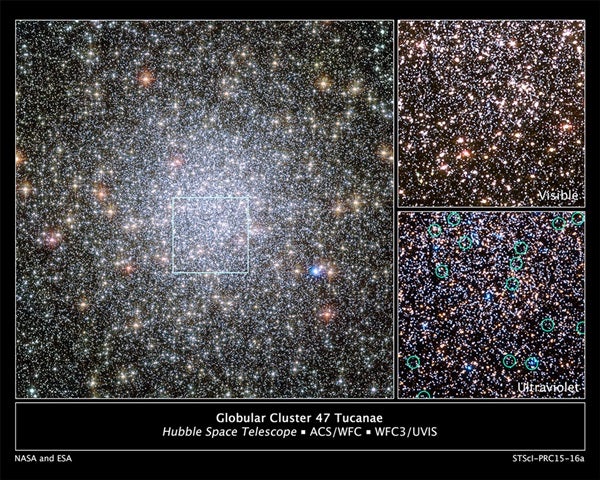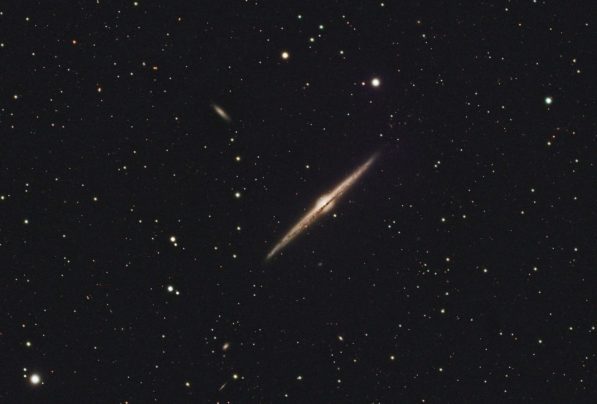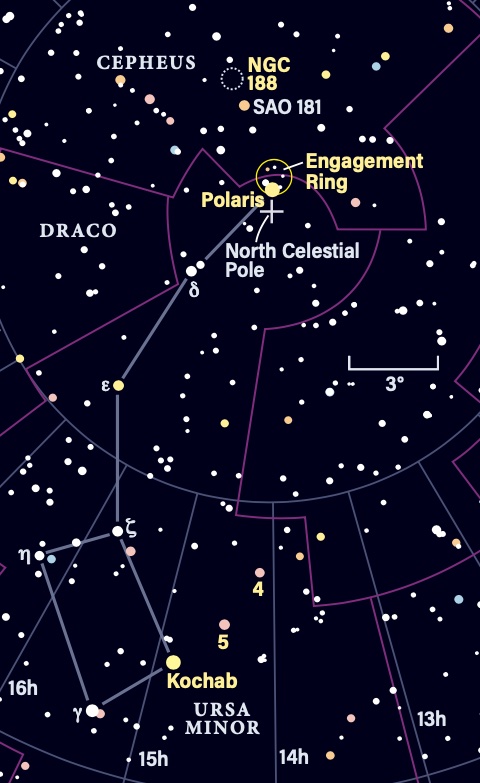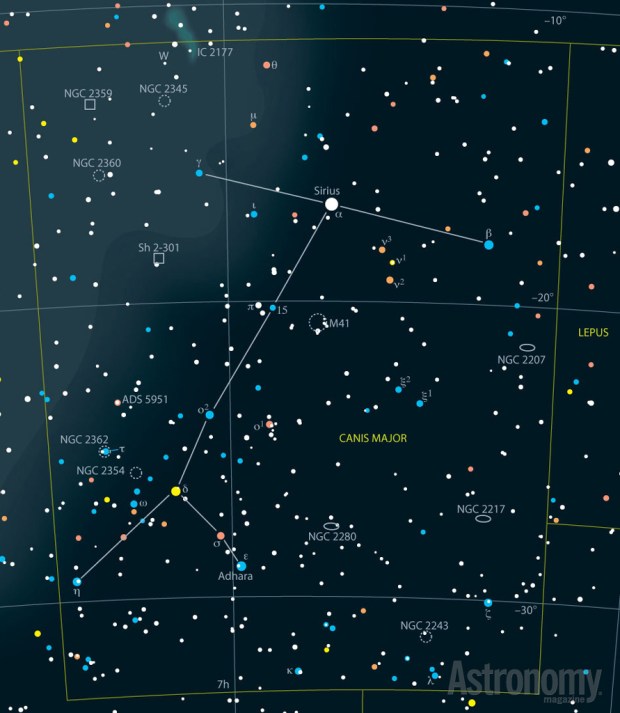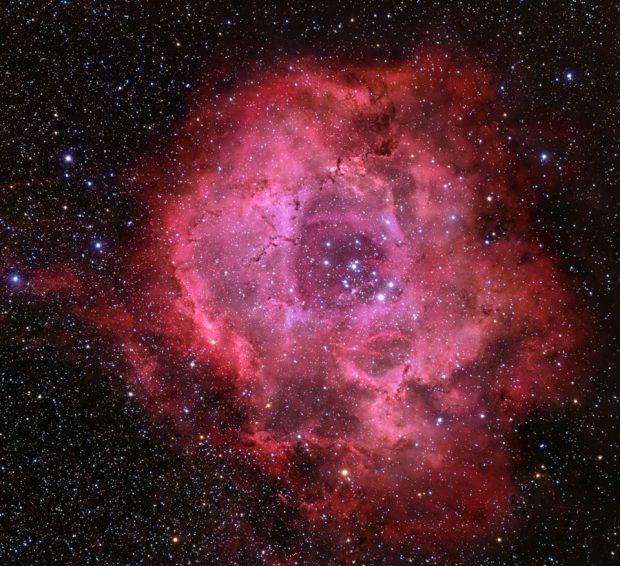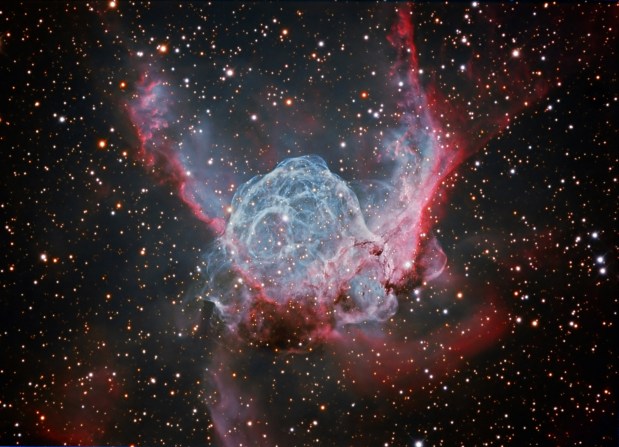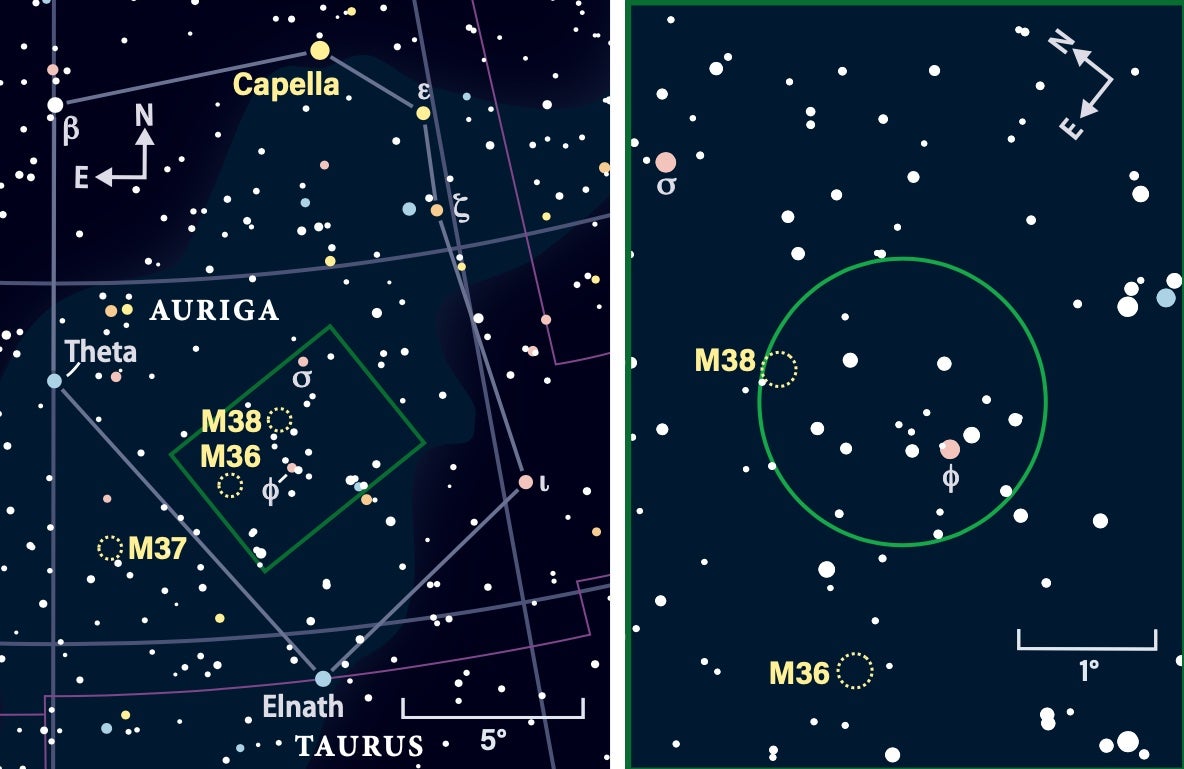Johann Elbert Bode logged this particular object 47th (in order of right ascension) in the Toucan in his 1801 catalog of stars, although he didn’t observe it himself. He instead picked it up from Nicolas Louis de Lacaille’s catalog. At magnitude 4.1, 47 Tucanae is visible to the naked eye. Considered second only to Omega Centauri in richness and brightness, this globular cluster is a true gem of the far southern sky. It is also designated NGC 104.
As amazing as this globular appears, it is outshone by its celestial neighbor, the Small Magellanic Cloud. The dwarf galaxy lies some 15 times more distant than 47 Tucanae, which is roughly 13,000 light-years away. With a wide-field telescope, it is easy to get both in the same low-power field — a truly awesome sight!
About the same diameter in the sky as the Full Moon (30.9′), this cluster is ideal for a small telescope with low and moderate magnification. With larger optics, the colors of the brightest stars become conspicuous. This is true for most bright globular clusters.
Observers who have seen a handful of globulars are aware that while these are all ancient spherical aggregates of stars, they don’t all look the same. Some have sharply concentrated cores, some are gradually concentrated, and some are more evenly illuminated across their width. Astronomers suspect some clusters with dense cores have central black holes, just like most galaxies harbor central supermassive black holes.
In 1999, astronomers targeted 47 Tucanae’s dense core with the Hubble Space Telescope in a survey to monitor stars, seeking a slight dip in brightness as planets pass in front of them. They didn’t find any here, suggesting planets must be rarer in globular clusters than in open clusters. Researchers believe this is due to the composition of a globular’s stars — mostly hydrogen, and lacking in the heavier elements necessary to birth planets.
But 47 Tucanae does have a plethora of other interesting targets: It contains 27 fast-rotating pulsars, the spinning remnants of dead stars. Only Terzan 5 in Sagittarius has more, with 39.
Make sure to explore Astronomy’s full list of 101 cosmic objects you must see. New entries will be added each week throughout 2022.
To get the latest astronomical news and observing content delivered directly to your door, subscribe to Astronomy magazine today!

